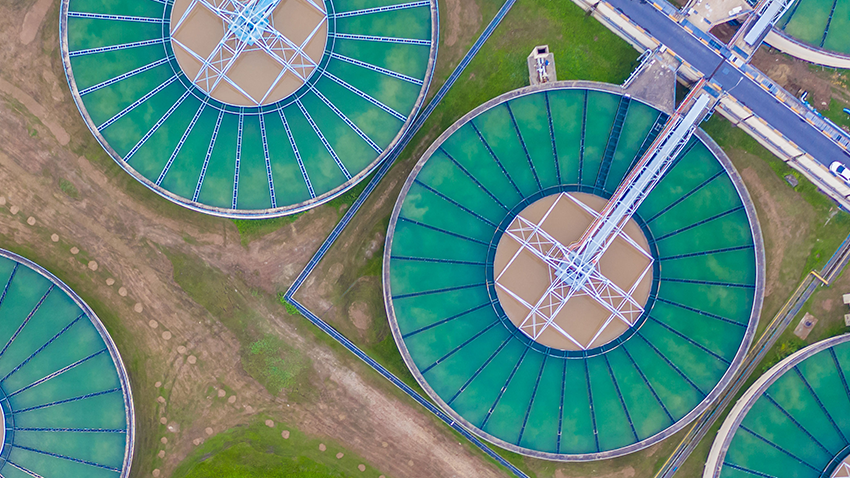Producing hydrocarbons requires energy. Turbines and diesel generators account for 70% of upstream CO2 emissions. Our diagnostics can help you become more energy efficient and reduce your carbon overhead.
Improve infrastructure performance
Building and operating hydrocarbon extraction infrastructure represents a huge investment in energy, capital, time, materials and people resources. Maximising the return on that resource must be achieved, while protecting people and the planet. If a well or reservoir is not producing to its full potential during its life then the resource that built or operates it is not being fully leveraged and some is being wasted. Equally, if maintenance and workover resources are being utilised, they should operate efficiently and contribute to overall asset performance with the goal of keeping wells safe, clean and productive.
All TGT diagnostic products are adept at revealing inefficiencies and guiding measures that enable existing infrastructure and resources to operate at maximum efficiency. For example, if a well is producing at high water cut, our Total Flow product will reveal the exact sources of water to enable targeted remediation. True Integrity products can be used proactively to identify casing weakness before the casing fails, helping to maintain asset performance and preventing more costly scenarios. Equally, because workover and rig resources are better targeted, time and energy is saved in getting the job done right first time.
Drilling a single
deepwater well can
produce more than
20 ktCO2
Improve intervention efficiency
Well delivery and intervention operations such as drilling, fracking, workovers, decommissioning [P&A] and diagnostic surveys require energy intensive surface equipment. Rigs, trucks, and pumps derive power from diesel engines or gas turbines that emit CO2 when the fuel is burned. A typical semi-submersible drilling rig emits roughly ~130 tCO2 per day and a Light Well Intervention vessel around 30 tCO2 per day. Improving efficiency and minimising the time to perform operations is a key factor in reducing energy consumption and emissions.
All TGT diagnostic products deliver insights that enable all types of operations to be carefully planned and precisely targeted so they can be executed efficiently with precision. Also, by enabling ‘lighter’ or ‘rigless’ interventions, our diagnostics can be deployed with minimal carbon footprint before heavier equipment is mobilised. Lastly, because through-barrier diagnostics provide a more complete picture, we provide maximum information in the minimum amount of time. Time savings translate to both cost and carbon savings and our aim is make every hour count.

A typical Jack-up
rig emits 70 tCO2
per day.
Improve injection performance
Most oil reservoirs will inevitably require additional pressure support to maintain production and improve oil recovery. Water injection is used widely for this purpose and many oilfields are injected with tens to hundreds of thousands of barrels per day. Pumping water is energy intensive and the resulting CO2 emissions can range from 1-2 kgCO2 per barrel. In fact, water injection is responsible for ~40% of total CO2 emissions for a typical oilfield.
Making matters worse, well completion and formation integrity issues can lead to water being diverted away from the target reservoir. This can result in abnormally high injection rates, reduced field production performance, and high water cut in producer wells. TGT’s True Flow products are being used globally by operators to ensure that all injected water is reaching the target and revealing where it is not. In many cases, these diagnostics lead to a significant reduction in water volumes and CO2 emissions, and increased field production.
Pumping 10,000
barrels of water per
day produces
5.4 ktCO2 annually
Reduce water production
High water cut is a persistent industry challenge responsible for unnecessarily high CO2 emissions and higher carbon per barrel. Excess water needs to be managed at surface, treated then reinjected or disposed of, and this requires energy. Also, excess water often means less oil, reduced recovery and longer production times, increasing emissions even further. And complicating the issue, produced water may be channeling from several elusive sources hidden behind the casing.
In many cases, excess water cut can be minimised or cured. If the operator can identify the true source of water downhole, measures can be taken to shut-off the water and restore oil production to lower carbon and economic levels. TGT’s True Flow products are used widely for this purpose. Unlike conventional diagnostics that can only detect water entering the wellbore, TGT’s through-barrier diagnostics can reveal the true source behind casing, enabling effective remediation, improved recovery rates and reduced carbon emissions.
